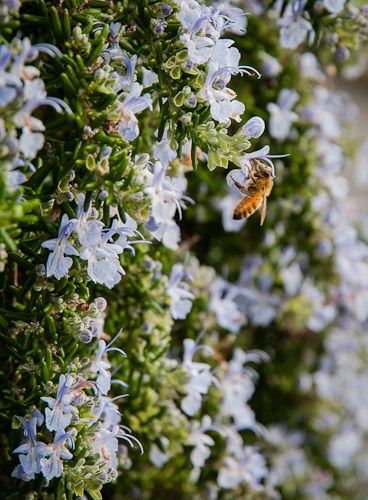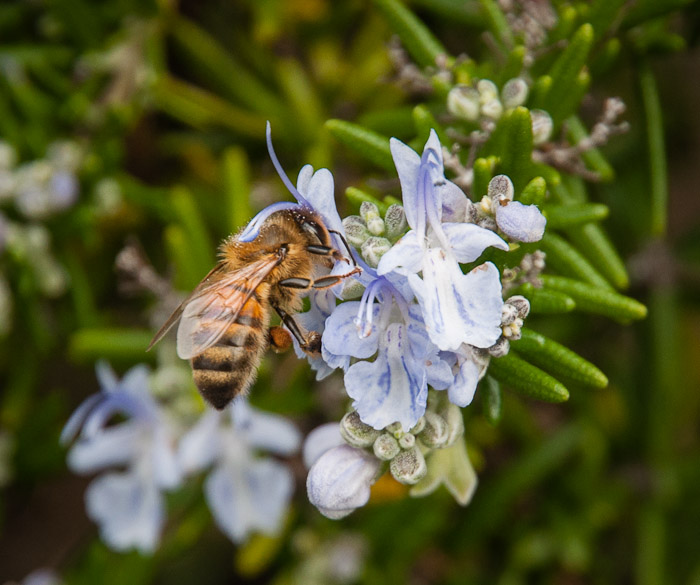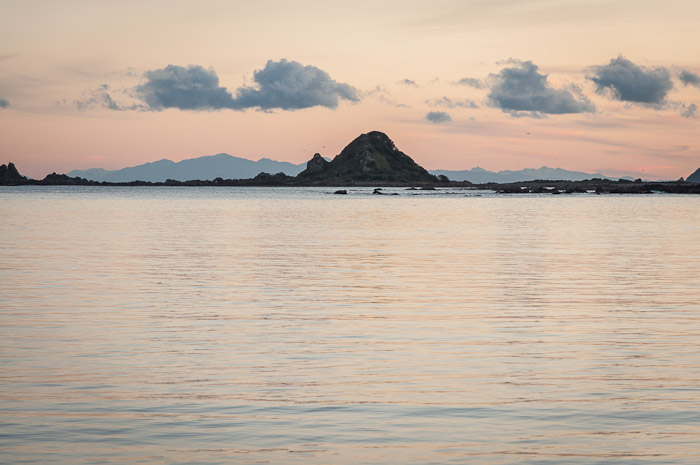 A grey cloudy day and at sunset there was almost no colour in the sky, although the sea had a slight pinkness.
A grey cloudy day and at sunset there was almost no colour in the sky, although the sea had a slight pinkness.
Along the rocky shore between Te Raekaihau Point and Princess Bay the access area has been planted with New Zealand native coastal plants which are resilient and adapted for harsh conditions.
In the subdued light the plants seem to glow - I love the blue-grey green of the Euphorbia glauca, a plant which is described as in "serious decline" but can be quite a thug if given half a chance - spreading by underground rhizomes. But it is much reduced in distribution by the usual suspects - introduced animals browsing and trampling it, competition from introduced weeds, erosion, and coastal "development" such as the widening of roads.
It contrasts well with the other plants. Dark green shapes in the background close to the water (and self-sown) are Coprosma repens, the "mirror plant", which has glossy leaves able to cope with salt spray. In the foreground there are two other coprosmas, a prostrate reddish one, possibly Coprosma acerosa, and a small shrubby one whose name I don't know. The rather delicate native ice plant, Horokaka or Disphyma australe, is spreading amongst them.
Using endangered plants in gardens and amenity plantings means that their survival is assisted. It's not pretending to mimic how things would look naturally - the plants tend to look much more plump and well-fed (nature is tougher on plants than gardeners) - and their arrangement is much more about human aesthetics than if they were sighted in their remaining habitats. But the process of planting them means we are thinking about caring for the coast as well as the future of the plants. I think they really reward this effort, that their colour, textures and shapes enliven the beauty of the coast.














